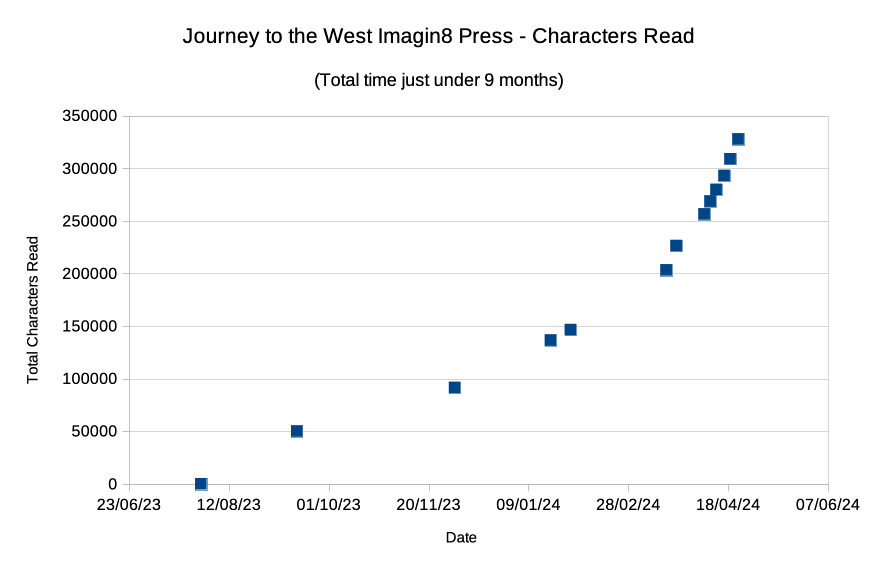
Chinese Learning Guide
Hello, my name is Levi Patel. I love to create beautiful music in New Zealand, combining intimate guitar and piano composition with richly harmonic strings and delicate melodies. And after a wonderful and completely unimaginable journey with learning Mandarin over the past three years, I now also work in China as 林外.

Learning Philosophy
When I started learning Mandarin, I knew I wanted to be able to speak to people when I arrived in China later that year, so I did a lot of research about how to learn a language quickly.
Learning a language requires learning vocabulary and grammar, like what we traditionally think of as language learning, which I will share recommendations for. The second crucial part, which most people are missing unless they move to a country, is encountering and using what we’ve learned hundreds of times.
After that many encounters, when we see/hear a word we’ve learned in real conversation we’ll immediately understand it, and will also easily find the words we need to express ourselves. To our brains, those words and sentence structures will feel automatic, and when we’re having a conversation we can focus on the parts we haven’t learned before. Afterwards, we can actually use those words and sentences when we interact with people.
The most efficient way to do that is to use a lot of “comprehensible input”, or what I think of as curated home immersion. That just means reading, watching, or listening to language that is easy enough that we can understand the meaning of it, even if we don’t know 100% of the words. If what we’re consuming is too difficult, it will just go over our heads and not be helpful, but with materials at the right level, you can relatively comfortably enjoy media while making a lot of progress. And because we’re following a story (e.g. reading a novel), our brains actually want to find out what happens next, and understanding the language becomes an essential skill.
Some people only want to learn the spoken language, rather than face the characters, but I actually think learning to read is essential. Because so many words have the same sound, without knowledge of characters they would be very difficult to remember beyond very basic, phrase-book style interactions. Plus it’s an unbelievable feeling to look at a page of characters and getting meaning from it. You can do it!
- Don’t worry about learning to write anything by hand unless you really want to for some reason, it’s much faster just to learn to read and type.

The Path Ahead
I feel like the start is the most brutal, just to be a little realistic for a moment! But it’s totally possible to learn Mandarin, and it gets easier and more inspiring as you go.
With this learning philosophy in mind, the first major goal is to build a good enough foundation of vocabulary and grammar that you can start immersing in the easiest available comprehensible Chinese content. You’ll need around a 300 word vocabulary to cross that threshold.
So I recommend approaching it in this order:
- Master pinyin (phonetic spelling of Mandarin) and pronunciation. This is the foundation of everything. It will set you up with good habits, and will help with remembering words.
- Learn enough vocabulary and basic grammar to be able to read the easiest books, mostly by using apps.
- Immerse at home through reading and listening to stories and conversation using vocabulary at your level. (Also continue learning words, and interact with people.)

1. Pinyin, Tones, and Pronunciation
Pinyin is the system for writing chinese words using the english alphabet. Mandarin has far fewer sounds than English, and the pronunciation is consistent, so once you learn every syllable, and the tones, you’ll be able to pronounce any word accurately. Mastering pinyin first will make the next steps much easier.
I learned using the Yoyo Chinese Pinyin Lesson Series on YouTube. It’s slow and I felt like I was in school, but it’s very clear. Some people also recommend the pronunciation series from Grace Mandarin Chinese, but I haven’t tried them.
You can then test yourself with this Pinyin Chart.
- Bonus tip: Just think of the third tone as a low tone, ignore people when they describe it as a v shape (i.e. rising a little at the end). It’s less confusing this way, and it’s more accurate in practice.
This was definitely the least interesting part for me, but keep practicing until you’re somewhat confident (I think I spent a few weeks chipping away at it), and it will pay off when you move on to phase 2.

2. Basic Vocabulary and Grammar
Before you can start reading and listening to stories, you’ll first need to learn some words and basic grammar, and continue learning them afterwards too. I recommend using HelloChinese and Anki (or TOFU Learn) every day, and using Pleco and the Chinese Grammar Wiki when needed for reference.
There are a lot of characters, but there’s also a system. Each word is made up of one or more characters, and each character has a sound and meaning of its own. There are maybe around 200 core components (which are also characters themselves) that you can combine to create all of the characters, so it isn’t an endless nightmare of memorisation, only a mild nightmare that gets easier.
But don’t worry too much about that, just focus on learning words and you’ll start to see the patterns.
App: HelloChinese
-
Like Duolingo but purpose built for Mandarin Chinese, so just generally better. There’s a free version that goes quite far so just use that until you hit the limit. I also found it worth paying to finish the course, especially since it goes on sale.
-
Make sure you turn off pinyin and only have the characters showing. It will seem impossible at first, but it forces you to start reading characters instead of always relying on the pinyin, and will actually be easier long term.
-
Unlike the neverending torment of Duolingo, once you finish the course, you’ll be ready to break free from the app. I kept doing the reviews for a while but eventually felt comfortable letting it go.
App: Anki
- A flashcard app for daily review to help you remember vocabulary. It uses spaced repetition, meaning it tests you more often on words you’re likely to forget, and less often on words you’ve already mastered, based on your previous performance.
I recommended having two flashcard decks:
- Download a premade deck of the most common words for you to gradually learn. Every day, learn a couple of new words every day (or whatever suits your pace) and review the previous words it wants you to review.
- Also have your own custom deck of words you encounter. If you want to remember it, add it to your deck, and then review regularly as it recommends. Don’t feel like you need to add too many, just if something interests you.
Be careful not to add too many new words in general, just go at a comfortable pace.
Anki is free on most platforms, but if you want a free alternative on iOS, TOFU Learn is also good.
App: Pleco
I never thought I could be so passionate about a dictionary, but this is my all time favourite app. You can search easily, the definitions and examples are great, it’s just a good dictionary I guess.
It also has lots of addons that will probably be helpful later, but they aren’t necessary.
Website: Chinese Grammar Wiki
If you want to look up any grammar, this is the only site you’ll need - Chinese Grammar Wiki
You can also browse grammar points if you’re interested, but generally I would suggest just looking things up as you get confused, rather than studying grammar deliberately.
Next Steps
Once you know enough words (around 300), then you can continue with these apps, but also start phase 3, where the real fun begins.

3. Curated Home Immersion
Once you know some vocabulary, you can start properly enjoying the most powerful part of the process - getting a lot of comprehensible input. The more you encounter Chinese that you understand, the more you’ll naturally pick up, and the more automatic your brain will become at processing it.
I’ll explain the different kinds of media below, and recommend particular books, shows, etc.
3.1 Graded Readers
My most valuable secret weapon for learning. These are short novels written for adult learners, but with extremely limited vocabulary.
I recommend reading on an ebook so you can use the inbuilt dictionary, or reading on your phone through the Pleco app. Then you can look up words you don’t know, and you’ll find that after a few times encountering the same word you’ll naturally learn it. When choosing a book, make sure you understand at least 90% of the words, otherwise it’s just painful and slow, and you’d be better returning to it later.
- Mandarin Companion (best starting point)
The best curated graded readers for the early stages are by Mandarin Companion, especially their Breakthrough Level Books. Don’t expect a masterpiece of literature, but the stories are all fine. Choose one of these as your first book, then come back to me when you’re ready to celebrate the epic achievement of finishing one.
First work through their levels of books, and then I can suggest what to read next.
- Journey to the West
All I knew before reading this was that it was one of China’s four great classics of literature. They didn’t mention the monkeys.
This is an epic graded reader by Imagin8 Press, and the source of my greatest progress — Journey to the West in simple Chinese.
Almost 800 pages long, it begins using only 500 different words, and by the end uses over 2000, gradually introducing them throughout the chapters with excellent pacing. It’s long but steady, and when you make it to the end you’ll definitely be able to have some decent conversations. It also did wonders for my reading and listening speed, despite the vocabulary getting more difficult throughout the book.

Every Chinese person knows this story, so you’ll also start picking up on some references once you’ve read it.
- Chinese Breeze
I found their stories and grading a little less consistent, but if you feel you need some more practice before moving from Mandarin Companion to Journey to the West, you can try some books from Chinese Breeze. They helped me make the transition.
3.2 Audiobooks
- Graded Reader Audiobooks
Many of the graded readers above also come in audiobook form, which is helpful for listening practice, even if you’ve read the book before. Mandarin Companion have many of their books in audiobook form, and there’s an audio version of Journey to the West with some incredibly enthusiastic, slightly unhinged voice acting.
- App: DuChinese
DuChinese is an app based around short graded stories, mostly aimed at reading practice. But because it’s difficult to find beginner level listening material, I recommend listening to these stories instead. There are some free stories you can try out, but most require a paid subscription. This app also goes on sale regularly.
Some of the early stories aren’t that interesting, but later on they have simple versions of some classics like Romance of the Three Kingdoms that I really enjoyed. The levels are well curated too.
3.3 Podcasts
The best podcasts for you will be almost entirely in Chinese, rather than explaining things in English, and they will use vocabulary that suits your level. It will take some time before these are accessible, before then it might be best to stick with the audiobooks recommended above.
- MaoMi Chinese
Short discussions about current culture and events related to China. She speaks super clearly, and they’re engaging topics.
(more coming soon)
3.4 Youtube Channels
I never got into the habit of using these, but there are lots of comprehensible input youtube channels, or people making very simple vlogs for learners to watch. Having visuals helps make it easier to understand, so these are probably really useful.

0. Bonus Resources
If you want some more community, I’m part of an incredible Discord server called Heavenly Path. Please let me know if you’d like to check it out, and I should be able to find an invitation link.
And finally, if you’re interested in my music, you can listen to one of my songs here. It won’t help you learn Chinese, but I hope you enjoy it.



